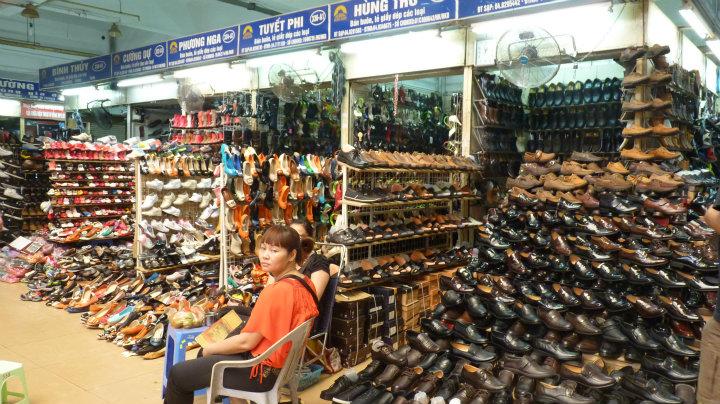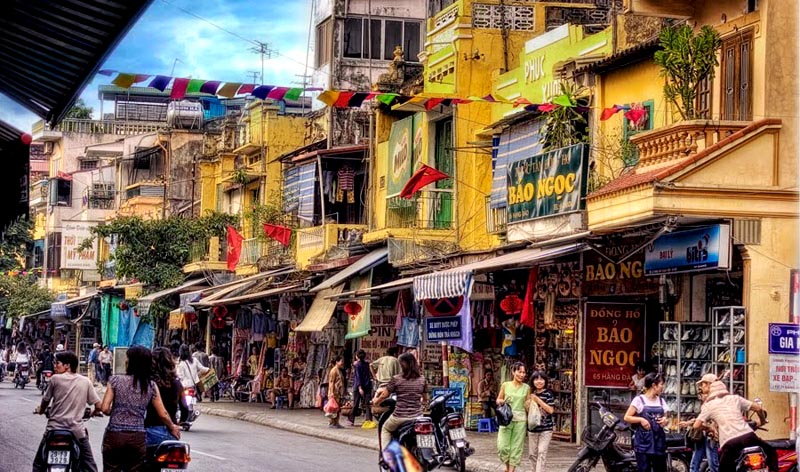Hanoi Over View
Hanoi Over View
Anyone who has ever visited Hanoi will probably tell you that it may be the most beautiful city in all of Asia - people have settled here along the Red River for a thousand years.
Nestled along wooded boulevards among the city’s two dozen lakes you will find architectural souvenirs left by all who conquered this great valley, from the Chinese who first came in the last millennium to the French, booted out in our own century.
Getting into Hanoi
The trip into the city from Noi Bai Airport takes about an hour and offers some poignant glimpses of modern Vietnamese life: farmers tending their fields, great rivers, modern highways that abruptly become bumpy roads. The drive is especially breathtaking at dusk when the roads fill with bicycles, and everything takes on the same deep colors as the modern paintings you see in Hanoi's galleries. Somehow the setting sun seems enormous here as it dips into the cornfields on the horizon.
On the edge of the city the road dissolves into a maze of winding, narrow, wooded lanes. You are surrounded by roadside artisans, shops and taverns, then by graceful villas and commuters on bicycles, cyclos and motorbikes. Modern buildings appear from nowhere, looking so out of place that you have to wonder if they were dropped from the sky and just left where they came to rest. While you tell yourself that nothing as preposterous as Hanoi can be so beautiful, you cannot help but be dazzled.
Meter taxis and hired cars are easy to find in Hanoi. If you plan an extended visit you might consider renting a bicycle or motorbike.
The north end of Hoan Kiem Lake is Hanoi's "ground zero." Practically all the city’s economical hotels, tourist shops, and cafés catering to visitors are located here. Not only is it the oldest part of the city, it is the busiest and most interesting. Every street is winding, intimate, and shady. At night the lights of storefronts keep the streets lit and animated.
Depending on which guide book you read, this district of Hanoi is variously called the "Old Quarter," the "Ancient Quarter," and "36 streets." It is wedged between the northern shore of Hoan Kiem Lake, the walls of the ancient Citadel, and the levies that protect the city from the Red River. The 36 little streets in the quarter are each named for a commodity once sold by all the businesses on that street. Streets here are named for the medicine, jewelry, fans, copper, horse hair, chicken, and even coffins once sold on them. This explains why the names of some of the longer streets inexplicably change after one or two blocks. As you explore, you will still happen upon entire blocks of tinsmiths, tailors, paper goods merchants, and lacquerware makers.
In the Ancient Quarter the most appealing mode of transportation for those who do not care to enjoy the "36 Streets" on foot is the cyclo. Often they are driven by men wearing pea-green pith helmets that make them look like soldiers. Settle on the fare in advance (a dollar or less one way). Most drivers will also quote you an hourly rate and will take you to all the obligatory cultural and historical spots.
Sightseeing
Hanoi is very compact, and the city’s most interesting places for tourists are all relatively close to each other, which makes it easy to enjoy the best parts of the city on foot or by cyclo. You could probably explore the Ancient Quarter and visit all the places below in a single day, but why rush?
Sightseeing on your very first morning in Hanoi should begin with a visit to Ho Chi Minh's Mausoleum, without a doubt the city’s single most visited site, and one of Vietnam's most revered places. The cyclo ride from Hoan Kiem Lake takes only about five minutes. The Mausoleum is open only in the mornings, from 7:30 to 10:30 in the Summer and from 8:00 to 11:00 in the Winter. There are often large crowds, so arrive early.
This imposing shrine was built on the edge of Ba Dinh Square, the place where Ho Chi Minh delivered the Declaration of Independence of the Republic of Viet Nam to half a million of his countrymen in 1945, following the surrender of the Japanese. The angular gray granite edifice stands stern and alone against the skyline. The street and square are usually so abandoned that the whole scene is enormously stately, like a miniature version of Tiananmen Square.
As you exit on the side of the building, look for the ornate yellow former Governor’s Palace, which also faces Ba Dinh Square. Although not open to the public, it is a poignant contrast to Ho Chi Minh's House on Stilts, which sits along a tiny lake in the wooded park behind. He lived and worked here in incredible simplicity from 1958 to 1969. Built of teak, the little house is an architectural gem, and many of his personal things remain on display.
The One Pillar Pagoda is about 50 meters away. This little architectural curiosity gets its name because the shrine sits atop a single massive pedestal. The original was built by Emperor Ly Thai To, who was inspired by a dream.
The Ho Chi Minh Museum is probably Vietnam's most important contemporary architectural achievement. Opened to the public in 1990 to commemorate Ho’s centenary, the exhibits are like a huge scrap book which chronicles his rather transient early years. Guides are available.
You can not help being overwhelmed by the serenity of Van Mieu (Temple of Literature) and Quoc Tu Giam (National University) from the moment you pass through its towering gates. Together, they make one of Asia’s loveliest spots. Hidden from the humming metropolis behind high stone walls and ancient Frangipani trees are some of Vietnam’s most magnificent religious structures and historical treasures. Great pools filled with blooming Lotus bear names like "Well of Heavenly Clarity". Dating from 1076, this was this part of Asia’s most prestigious center of learning for aristocrats and the children of the Mandarins. The focal point of the site is the Sanctuary dedicated to Confucius, which is filled with elaborate Chinese reliquary. Live performances of traditional folk music by costumed women are ongoing during public hours.
One can visit Hanoi's attractions by discovering them himself or herself (read our suggested itinerary for walking tour) or with a prebooked guided Hanoi city tour.
Hoan Kiem Lake
Although not at its geographical center, after the expansion of Hanoi into a major metropolitan area in 2009, little Hoan Kiem Lake remains the very heart of life in Hanoi. According to a 15th Century legend, a giant turtle presented Emperor Le Loi with a magic sword with which to defeat Chinese invadors. In accordance with their pact, the Emperor returned the sword to the turtle after a glorious victory in battle. Thus, the lake was named Hoan Kiem, or "restored sword."
The lake itself is like a living thing with a personality that changes continuously with the hour and the season. Some of your most vivid memories of Hanoi might come from the 45 minute walks you take around Hoan Kiem at sunrise, at midday, and again after dark.
Shortly after dawn, hundreds of people take their daily exercise on the footpath that circles the lake. If you arrive around six you will see a dozen badminton games, scores of old people practicing Tai Chi, and many shirtless young men jogging or stretching.
During the day the lake belongs to tourists and to workers from surrounding government offices. Tour busses and taxis park at the North end of the lake, near the gates and foot bridge which lead to the Ngoc Son Pagoda. Scores of young people sell post cards, maps, and paperback books here. Others shine shoes or offer to memorialize your visit with photos taken with must surely be war-era 35mm cameras. Although persistent, they are seldom rude. Many speak wonderful English and are well worth having a conversation with.
Ngoc Son Temple
Ngoc Son Pagoda sits on an islet at the North end of the lake. The oldest structures in the complex dated back to 1225, though most of what you see was either built or reconstructed in the 19th century. In addition to the two beautifully ornate Confucianist sanctuaries dedicated to various long-dead humans, a huge stuffed turtle (which most certainly never swam in this lake) resides in a glass display case. The spot is lovely, not only for the ostentatious architecture, but for interesting people who take refuge from the city here. Your camera may capture old men playing checkers in the Pavilion of the Stelae, someone fishing quietly among the willows which practically obscure the island from view, a couple posing for their wedding photo with the Tortoise Pagoda in the background, or the young photographers who always gather on the red wooden bridge.
Practically across the street from the bridge is the water puppetry theater. Scenes from Vietnamese lore and history (including ancient battles) are elaborately performed by colorful lacquered puppets in an indoor pond, accompanied by traditional Vietnamese folk music. It sounds awfully corny, but missing this Hanoi attraction is like going to Paris and skipping the Eiffel Tower. Tickets for the evening performances are cheap and sell out early in the day. Avoid seats closest to the water or you may get splashed.
The Old Quarter
Some of the 36 streets that make up the Ancient Quarter still offer only a single commodity. One of the best is Hang Quat, where shops sell an incredible array of lacquered wood candle sticks, bowls, picture frames, religious shrines, and decorative pieces. Practically every single item is painted in some combination of red, white and gold. Many of the things are elaborate to the point of being garish. Since prices are staggeringly low, buy what you can. Like folk art in other developing nations, these uniquely Northern Vietnamese handicrafts will begin to die out along with the present generation of artisans creating them. The shelves of shops in Ho Chi Minh city are already filled with factory made schlock. Sadly, this will happen in Hanoi soon enough.
Vietnamese silk is among the world’s finest. Hang Gai (thread street) has for centuries been home to some of Hanoi’s best silk shops.
Hanoi Culture
Hanoians are proud people; they take pride in their cuisines, their etiquettes, their rich tradition and about their own love for the city not only to international tourists but also to people from other provinces in Vietnam. Hanoi food is listed among things you should try before leaving to another world. (read our top 5 must-try foods in Hanoi).
Adding to that, Hanoi is packed with museums, monuments, cafes, restaurants, discos, handicraft stores and almost anything that make your stay both convenient and entertaining. Most travellers spend about 2-5 days to tour the city but should you fall in love with Hanoi, you can always stay longer!
Anyone who has ever visited Hanoi will probably tell you that it may be the most beautiful city in all of Asia - people have settled here along the Red River for a thousand years.
Nestled along wooded boulevards among the city’s two dozen lakes you will find architectural souvenirs left by all who conquered this great valley, from the Chinese who first came in the last millennium to the French, booted out in our own century.
Getting into Hanoi
The trip into the city from Noi Bai Airport takes about an hour and offers some poignant glimpses of modern Vietnamese life: farmers tending their fields, great rivers, modern highways that abruptly become bumpy roads. The drive is especially breathtaking at dusk when the roads fill with bicycles, and everything takes on the same deep colors as the modern paintings you see in Hanoi's galleries. Somehow the setting sun seems enormous here as it dips into the cornfields on the horizon.
On the edge of the city the road dissolves into a maze of winding, narrow, wooded lanes. You are surrounded by roadside artisans, shops and taverns, then by graceful villas and commuters on bicycles, cyclos and motorbikes. Modern buildings appear from nowhere, looking so out of place that you have to wonder if they were dropped from the sky and just left where they came to rest. While you tell yourself that nothing as preposterous as Hanoi can be so beautiful, you cannot help but be dazzled.
Meter taxis and hired cars are easy to find in Hanoi. If you plan an extended visit you might consider renting a bicycle or motorbike.
The north end of Hoan Kiem Lake is Hanoi's "ground zero." Practically all the city’s economical hotels, tourist shops, and cafés catering to visitors are located here. Not only is it the oldest part of the city, it is the busiest and most interesting. Every street is winding, intimate, and shady. At night the lights of storefronts keep the streets lit and animated.
Depending on which guide book you read, this district of Hanoi is variously called the "Old Quarter," the "Ancient Quarter," and "36 streets." It is wedged between the northern shore of Hoan Kiem Lake, the walls of the ancient Citadel, and the levies that protect the city from the Red River. The 36 little streets in the quarter are each named for a commodity once sold by all the businesses on that street. Streets here are named for the medicine, jewelry, fans, copper, horse hair, chicken, and even coffins once sold on them. This explains why the names of some of the longer streets inexplicably change after one or two blocks. As you explore, you will still happen upon entire blocks of tinsmiths, tailors, paper goods merchants, and lacquerware makers.
In the Ancient Quarter the most appealing mode of transportation for those who do not care to enjoy the "36 Streets" on foot is the cyclo. Often they are driven by men wearing pea-green pith helmets that make them look like soldiers. Settle on the fare in advance (a dollar or less one way). Most drivers will also quote you an hourly rate and will take you to all the obligatory cultural and historical spots.
Sightseeing
Hanoi is very compact, and the city’s most interesting places for tourists are all relatively close to each other, which makes it easy to enjoy the best parts of the city on foot or by cyclo. You could probably explore the Ancient Quarter and visit all the places below in a single day, but why rush?
Sightseeing on your very first morning in Hanoi should begin with a visit to Ho Chi Minh's Mausoleum, without a doubt the city’s single most visited site, and one of Vietnam's most revered places. The cyclo ride from Hoan Kiem Lake takes only about five minutes. The Mausoleum is open only in the mornings, from 7:30 to 10:30 in the Summer and from 8:00 to 11:00 in the Winter. There are often large crowds, so arrive early.
This imposing shrine was built on the edge of Ba Dinh Square, the place where Ho Chi Minh delivered the Declaration of Independence of the Republic of Viet Nam to half a million of his countrymen in 1945, following the surrender of the Japanese. The angular gray granite edifice stands stern and alone against the skyline. The street and square are usually so abandoned that the whole scene is enormously stately, like a miniature version of Tiananmen Square.
As you exit on the side of the building, look for the ornate yellow former Governor’s Palace, which also faces Ba Dinh Square. Although not open to the public, it is a poignant contrast to Ho Chi Minh's House on Stilts, which sits along a tiny lake in the wooded park behind. He lived and worked here in incredible simplicity from 1958 to 1969. Built of teak, the little house is an architectural gem, and many of his personal things remain on display.
The One Pillar Pagoda is about 50 meters away. This little architectural curiosity gets its name because the shrine sits atop a single massive pedestal. The original was built by Emperor Ly Thai To, who was inspired by a dream.
The Ho Chi Minh Museum is probably Vietnam's most important contemporary architectural achievement. Opened to the public in 1990 to commemorate Ho’s centenary, the exhibits are like a huge scrap book which chronicles his rather transient early years. Guides are available.
You can not help being overwhelmed by the serenity of Van Mieu (Temple of Literature) and Quoc Tu Giam (National University) from the moment you pass through its towering gates. Together, they make one of Asia’s loveliest spots. Hidden from the humming metropolis behind high stone walls and ancient Frangipani trees are some of Vietnam’s most magnificent religious structures and historical treasures. Great pools filled with blooming Lotus bear names like "Well of Heavenly Clarity". Dating from 1076, this was this part of Asia’s most prestigious center of learning for aristocrats and the children of the Mandarins. The focal point of the site is the Sanctuary dedicated to Confucius, which is filled with elaborate Chinese reliquary. Live performances of traditional folk music by costumed women are ongoing during public hours.
One can visit Hanoi's attractions by discovering them himself or herself (read our suggested itinerary for walking tour) or with a prebooked guided Hanoi city tour.
Hoan Kiem Lake
Although not at its geographical center, after the expansion of Hanoi into a major metropolitan area in 2009, little Hoan Kiem Lake remains the very heart of life in Hanoi. According to a 15th Century legend, a giant turtle presented Emperor Le Loi with a magic sword with which to defeat Chinese invadors. In accordance with their pact, the Emperor returned the sword to the turtle after a glorious victory in battle. Thus, the lake was named Hoan Kiem, or "restored sword."
The lake itself is like a living thing with a personality that changes continuously with the hour and the season. Some of your most vivid memories of Hanoi might come from the 45 minute walks you take around Hoan Kiem at sunrise, at midday, and again after dark.
Shortly after dawn, hundreds of people take their daily exercise on the footpath that circles the lake. If you arrive around six you will see a dozen badminton games, scores of old people practicing Tai Chi, and many shirtless young men jogging or stretching.
During the day the lake belongs to tourists and to workers from surrounding government offices. Tour busses and taxis park at the North end of the lake, near the gates and foot bridge which lead to the Ngoc Son Pagoda. Scores of young people sell post cards, maps, and paperback books here. Others shine shoes or offer to memorialize your visit with photos taken with must surely be war-era 35mm cameras. Although persistent, they are seldom rude. Many speak wonderful English and are well worth having a conversation with.
Ngoc Son Temple
Ngoc Son Pagoda sits on an islet at the North end of the lake. The oldest structures in the complex dated back to 1225, though most of what you see was either built or reconstructed in the 19th century. In addition to the two beautifully ornate Confucianist sanctuaries dedicated to various long-dead humans, a huge stuffed turtle (which most certainly never swam in this lake) resides in a glass display case. The spot is lovely, not only for the ostentatious architecture, but for interesting people who take refuge from the city here. Your camera may capture old men playing checkers in the Pavilion of the Stelae, someone fishing quietly among the willows which practically obscure the island from view, a couple posing for their wedding photo with the Tortoise Pagoda in the background, or the young photographers who always gather on the red wooden bridge.
Practically across the street from the bridge is the water puppetry theater. Scenes from Vietnamese lore and history (including ancient battles) are elaborately performed by colorful lacquered puppets in an indoor pond, accompanied by traditional Vietnamese folk music. It sounds awfully corny, but missing this Hanoi attraction is like going to Paris and skipping the Eiffel Tower. Tickets for the evening performances are cheap and sell out early in the day. Avoid seats closest to the water or you may get splashed.
The Old Quarter
Some of the 36 streets that make up the Ancient Quarter still offer only a single commodity. One of the best is Hang Quat, where shops sell an incredible array of lacquered wood candle sticks, bowls, picture frames, religious shrines, and decorative pieces. Practically every single item is painted in some combination of red, white and gold. Many of the things are elaborate to the point of being garish. Since prices are staggeringly low, buy what you can. Like folk art in other developing nations, these uniquely Northern Vietnamese handicrafts will begin to die out along with the present generation of artisans creating them. The shelves of shops in Ho Chi Minh city are already filled with factory made schlock. Sadly, this will happen in Hanoi soon enough.
Vietnamese silk is among the world’s finest. Hang Gai (thread street) has for centuries been home to some of Hanoi’s best silk shops.
Hanoi Culture
Hanoians are proud people; they take pride in their cuisines, their etiquettes, their rich tradition and about their own love for the city not only to international tourists but also to people from other provinces in Vietnam. Hanoi food is listed among things you should try before leaving to another world. (read our top 5 must-try foods in Hanoi).
Adding to that, Hanoi is packed with museums, monuments, cafes, restaurants, discos, handicraft stores and almost anything that make your stay both convenient and entertaining. Most travellers spend about 2-5 days to tour the city but should you fall in love with Hanoi, you can always stay longer!
Other Article
Ninh Binh
The magical Ninh Binh is located in northern Vietnam, 100km south of Hanoi and is nicknamed “Ha Long Bay on Land”. Although we had a magnificent 3-day cruise on Halong Bay, we preferred it here in Ninh Binh...
Hanoi
Hanoi, one of the most beautiful of the colonial Indochinese cities, is often the start or end point of a trip to Vietnam, and what a great welcome or farewell it is. Oozing with charm, Hanoi has gone through wholesale changes since Vietnam swung open its doors to tourism, but it remains true to its essential personality and is an amazing city to experience...
HOA LU ANCIENT CAPITAL: DINH & LE TEMPLES
You can find many unique temples in Ninh Binh especially Dinh Tien Hoang and Le Dai Hanh Temple in the very first capital of Vietnam. The Dinh and Le temples, regarded as one of the top 10 places to visit in Ninh Binh, are two extremely well-preserved national treasures that still retains a lot of Vietnamese traditional style. Here, let’s explore these splendid locations in your travel to Vietnam...
CUC PHUONG NATIONAL PARK - THE WORLD OF TROPICAL CREATURES
Phuong National Park is one of the must-see destinations in your Vietnam trip because of the pristine beauty of jungle forests. It is listed on top 10 national parks in Vietnam with high biodiversity and tranquil atmosphere of an uninhabited tropical area. Follow us to discover amazing things in this stunning national park!
TOP 10 BEST PLACES TO VISIT IN NINH BINH
If you want to see every beauty of Vietnam in one place, Ninh Binh is an ideal tourist destination for you. Joining Ninh Binh Tours, you will contemplate the richness of culture, history, traditions as well as remarkable nature in the region...
Tran Quoc Pagoda
Located on a small penisula on the East side of West Lake, Tran Quoc Pagoda is regarded as the most ancient pagoda in Hanoi with its history line of more than 1,500 years. The architecture of this Buddhist center is a subtle combination between the solemn and beautiful landscape on the peaceful and quiet ambiance of West Lake’s surface...
Saint Joseph Cathedral
Saint Joseph Cathedral, located at 40 Nha Chung street, Hanoi, is a Roman Catholic cathedral with neo- gothic style, which was built about 120 years ago...
Bat Trang pottery village
Bat Trang, traditional porcelain and pottery village with history of seven centuries, is an interesting attraction in Hanoi that tourists should not ignore...
Hanoi Opera House
An essential part of Hanoi’s 000 year history, Hanoi Opera House is without doubt one of the most famous cultural and architectural monuments of Hanoi. Located on the famous August Revolution Square, Hanoi Opera House is just a few steps from Hoan Kiem Lake, Hanoi Old Quarter and Vietnam History Museum...
Hanoi Ancient House at 87 Ma May Street
Located within Hanoi Old Quarter, the ancient house at 87 Ma May street which was built at the late of the Twentieth century, is quite intact with typical architecture of ancient houses on Hanoi street...
Vietnam Women’s Museum
Despite being a patriarchal society, Viet Nam still reserves a special, if not sacred, place to honour Vietnamese women. Not only is October 20th is made Vietnam’s Women day but there also exists a museum dedicated to women...
Van Phuc Silk Village
Situated on the bank of Nhue River, about 10km southwest of Hanoi Old Quarter, Van Phuc silk village is renowned for its traditional weaving and premium quality silk products. At the age of more than 1,200 years, Van Phuc is proud to be the most ancient silk village which provides the best silk in Vietnam...
Hanoi Flag Tower
Hanoi Flag Tower at the age of nearly 200 years is renowned as one of the symbols of Hanoi. The construction began in 1805 and completed in 1812, the 11th year of Gia Long time, Nguyen dynasty, five years after construction time of Flag Tower in Hue...
Long Bien Bridge
If Hoan Kiem Lake with special green water and the red bridge named The Huc is the symbol of an elegant and charming ancient city; Red river and Long Bien bridge may be seen as the symbol of courageous capital in wars...
Hanoi Water Puppet Theatre
Located at 57B, Dinh Tien Hoang street, nearby Hoan Kiem Lake, Thang Long Water Puppet Theater is a familiar address for both domestic tourists and foreign ones, who want to enjoy water puppet shows and discovery the beauty of this unique Vietnam traditional art...
Ho Chi Minh Mausoleum
Ho Chi Minh Mausoleum is an important historical attraction of Hanoi, known for honoring the national hero: President Ho Chi Minh...
Ba Dinh square
The square adjacent to the Ho Chi Minh complex is called Ba Dinh square, where many important national historical events in modern history took place. The square was originally developed by French colony and known as Round Point Pugininer...
Vietnam History Museum
Vietnam History Museum lies silently on the back of the renowned Hanoi Opera House, at No.1 Pham Ngu Lao Street, Hoan Kiem District. This museum was built in 1926 under the name Louis Finot Museum by the Ecole Française d’Extreme-Orient and finish in 1932...
Vietnam Museum of Ethnology
This is the most recent yet probably the largest and undoubtedly the most interesting Museums in Hanoi and Vietnam. The Museum comes out of the recognition that Vietnam is a multi-ethnic country and that more attention should be paid to promote socio-cultural diversity...
Temple of literature
The Temple of Literature is about 10 minutes away from Hoan Kiem lake. It was constructed in 1070 under Ly Thanh Tong’s dynasty, first to honor Confucius and nowadays to celebrate the doctorates and high rank scholars of Vietnam. In 1076, King Ly Nhan Tong continued the work and built Quoc Tu Giam as the first university of Vietnam...
Hoan Kiem Lake
If you are about to visit Hanoi for a few days, it is very likely that you will reside somewhere near Hoan Kiem Lake. The lake is considered the center of Hanoi, not only physically but also symbolically. In fact, the more you spend time learning about the lake, the more special it becomes...
Dong Xuan market
Although located in the heart of the Old Quarters, the market is fairly young compared with the surrounding streets. It used to be an empty lot in front of Huyen Thien pagoda. Old Hanoi residents gradually developed trade activities here because of its proximity to the river, which made it convenient for transportation of goods...
5 best shopping streets of Hanoi Old Quarter
Hanoi may not be a fashion destination but there plenty of places to shop that have stock of trendy to basic clothing but with very cheap price tag. Though variety of sizes is indeed questioning, it is worth a try to check them out. Here are the 5 best places to purchase your clothes in the Old Quarter...
Powered by NAM Travel (Nam Huong Travel Limited Company)
© Copyright 2018 NAM Travel (Nam Huong Travel Limited Company) - Use of this website constitutes acceptance of the NAM Travel (Nam Huong Travel Limited Company)'s

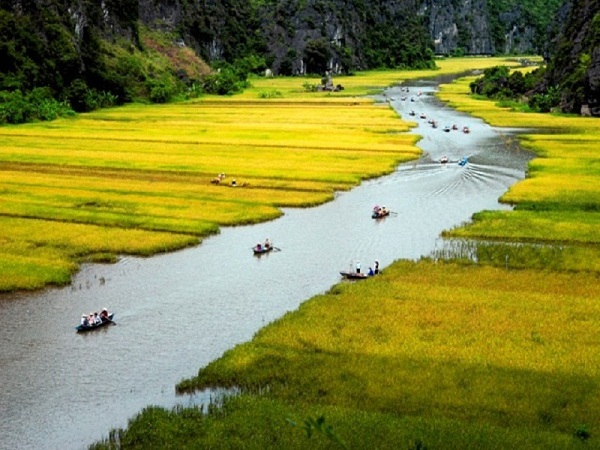
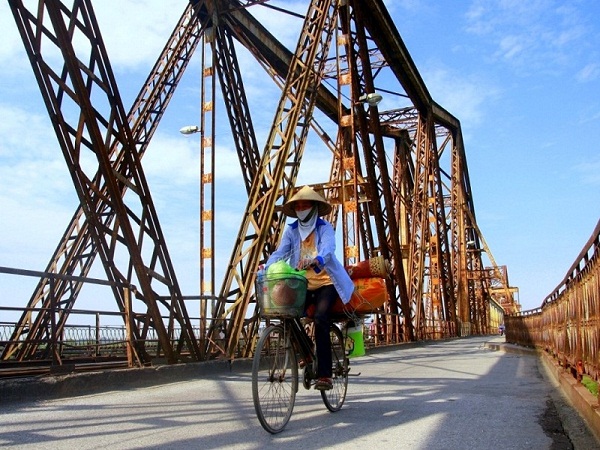
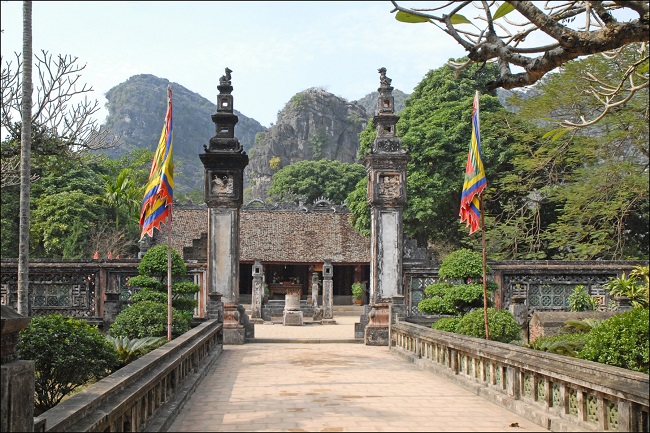
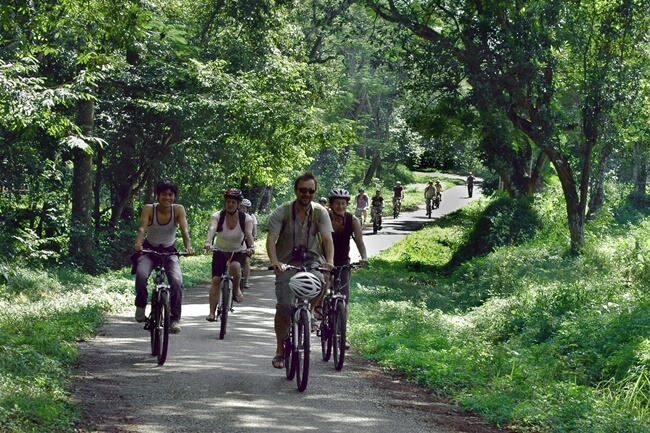
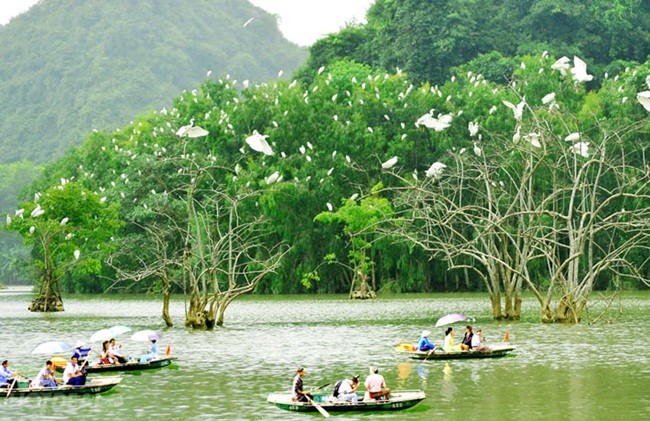
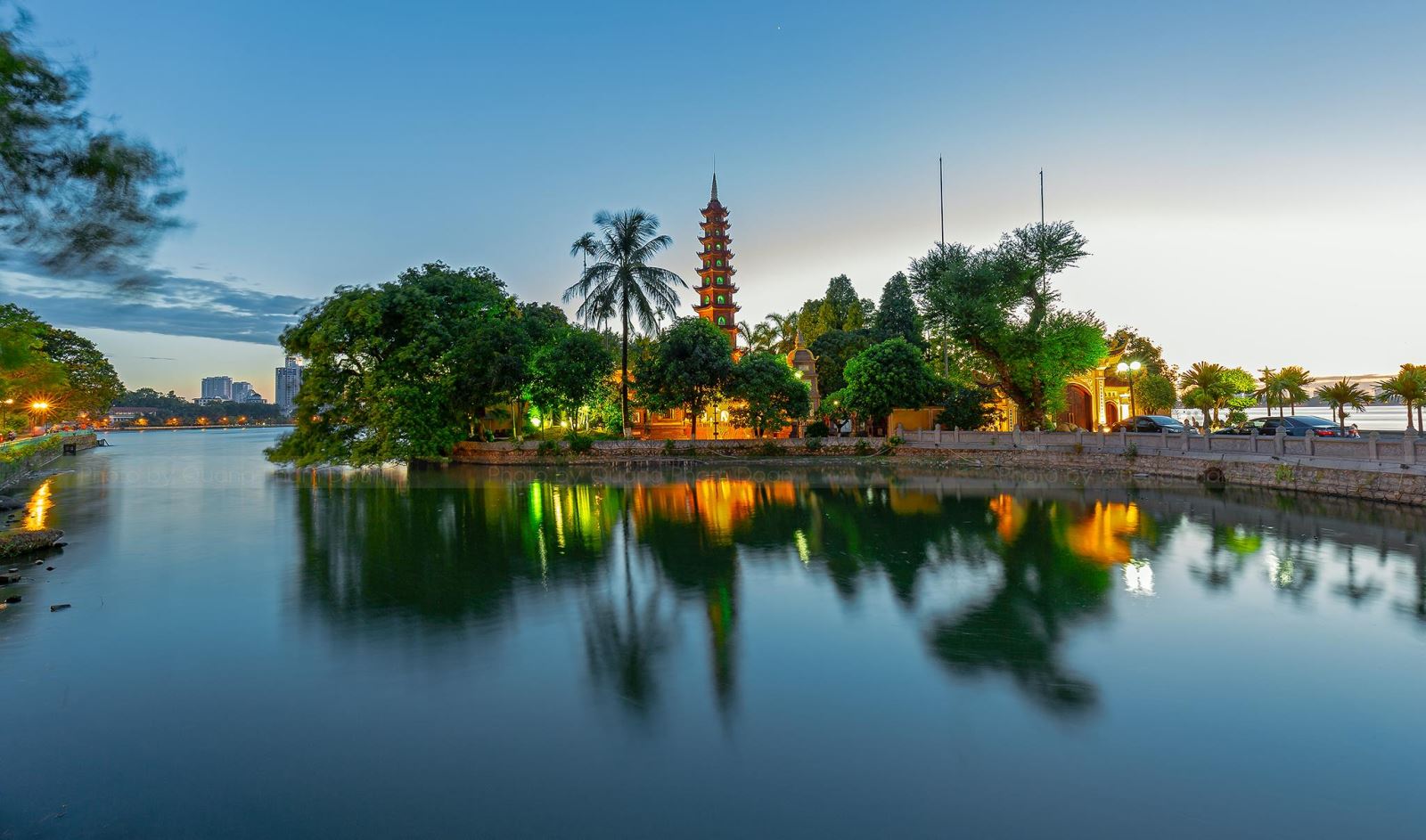
.jpg)
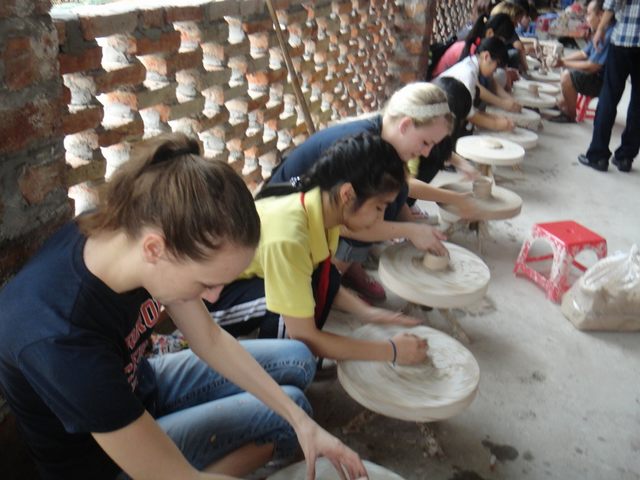
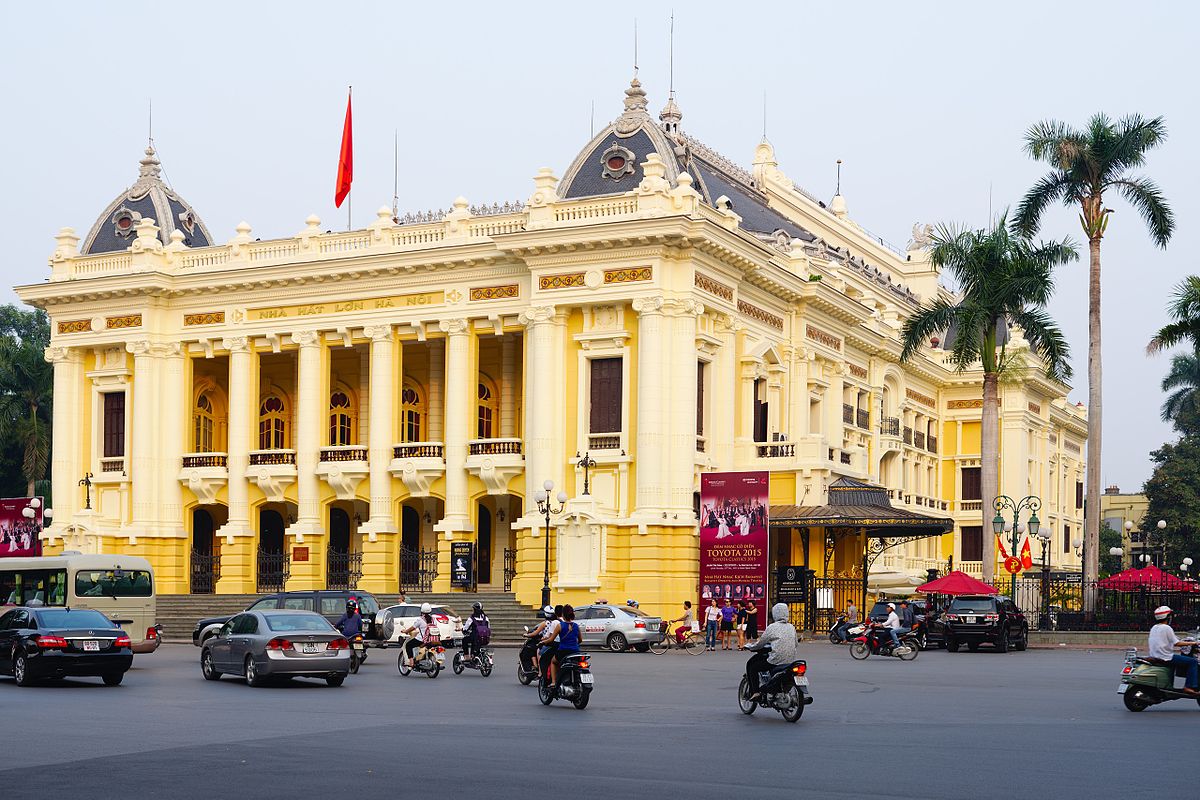
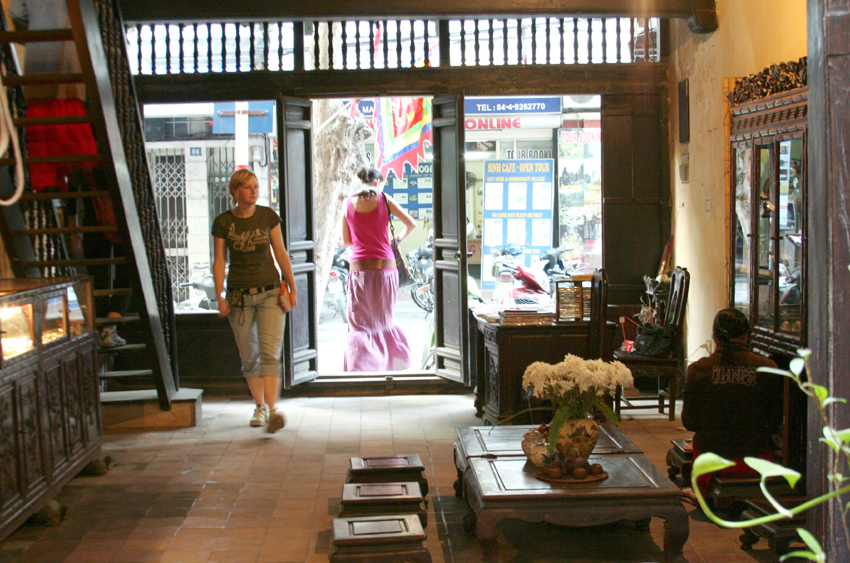
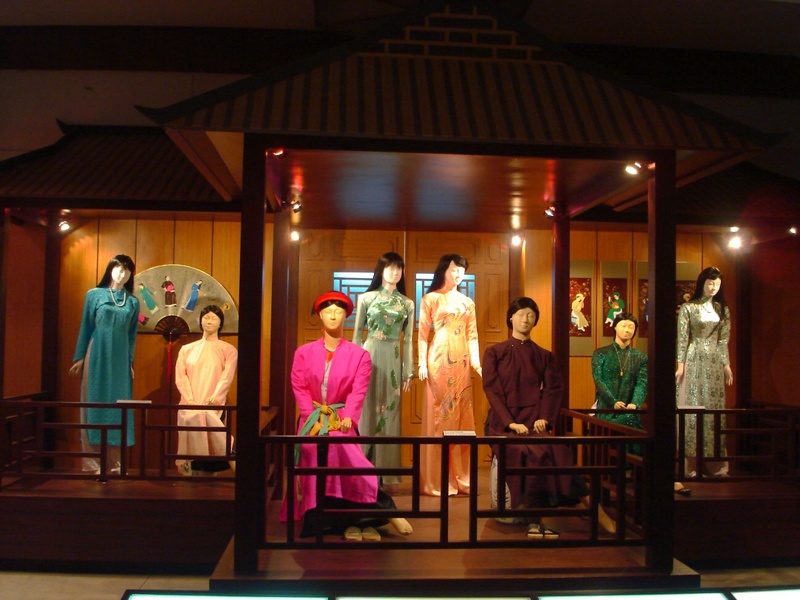
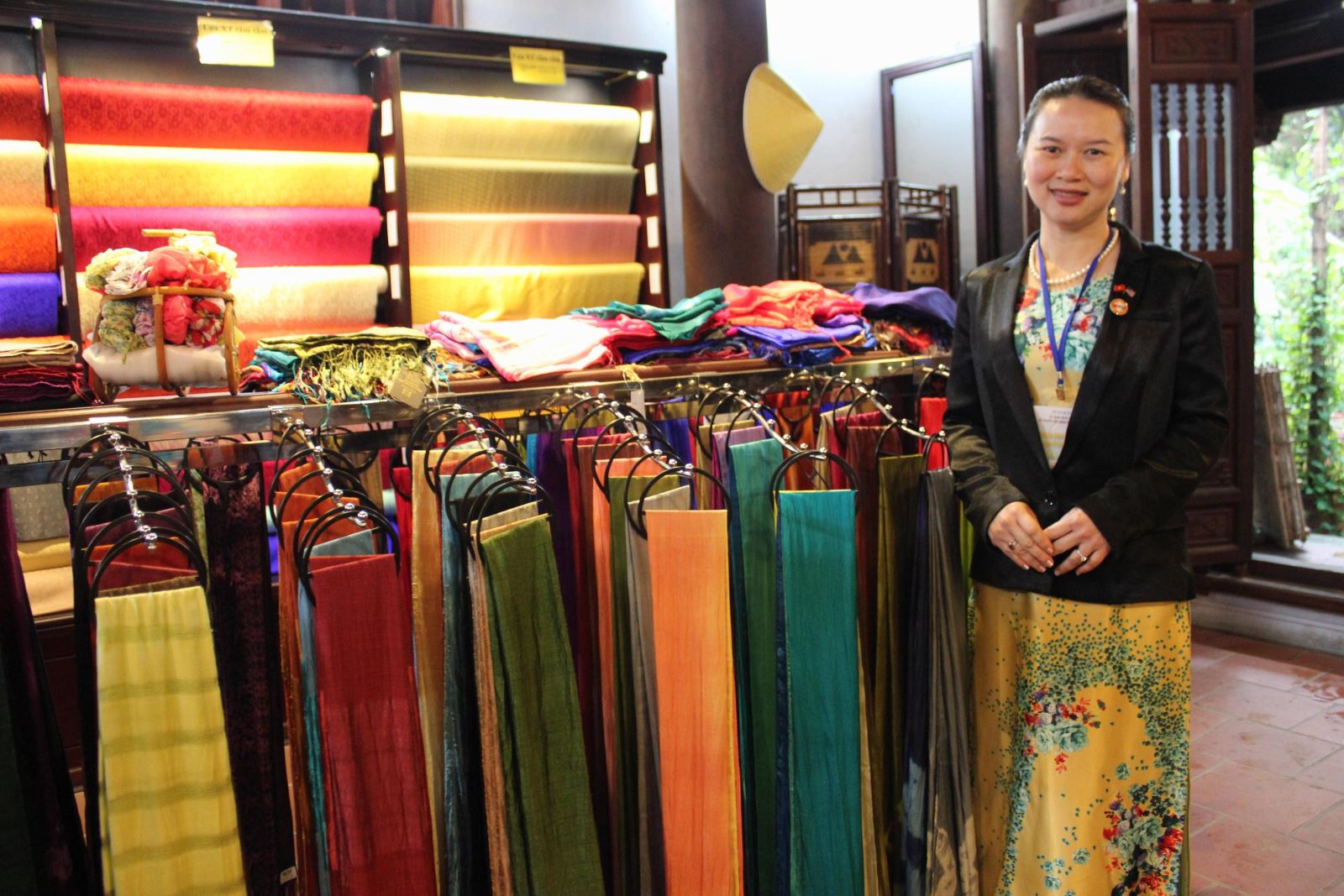
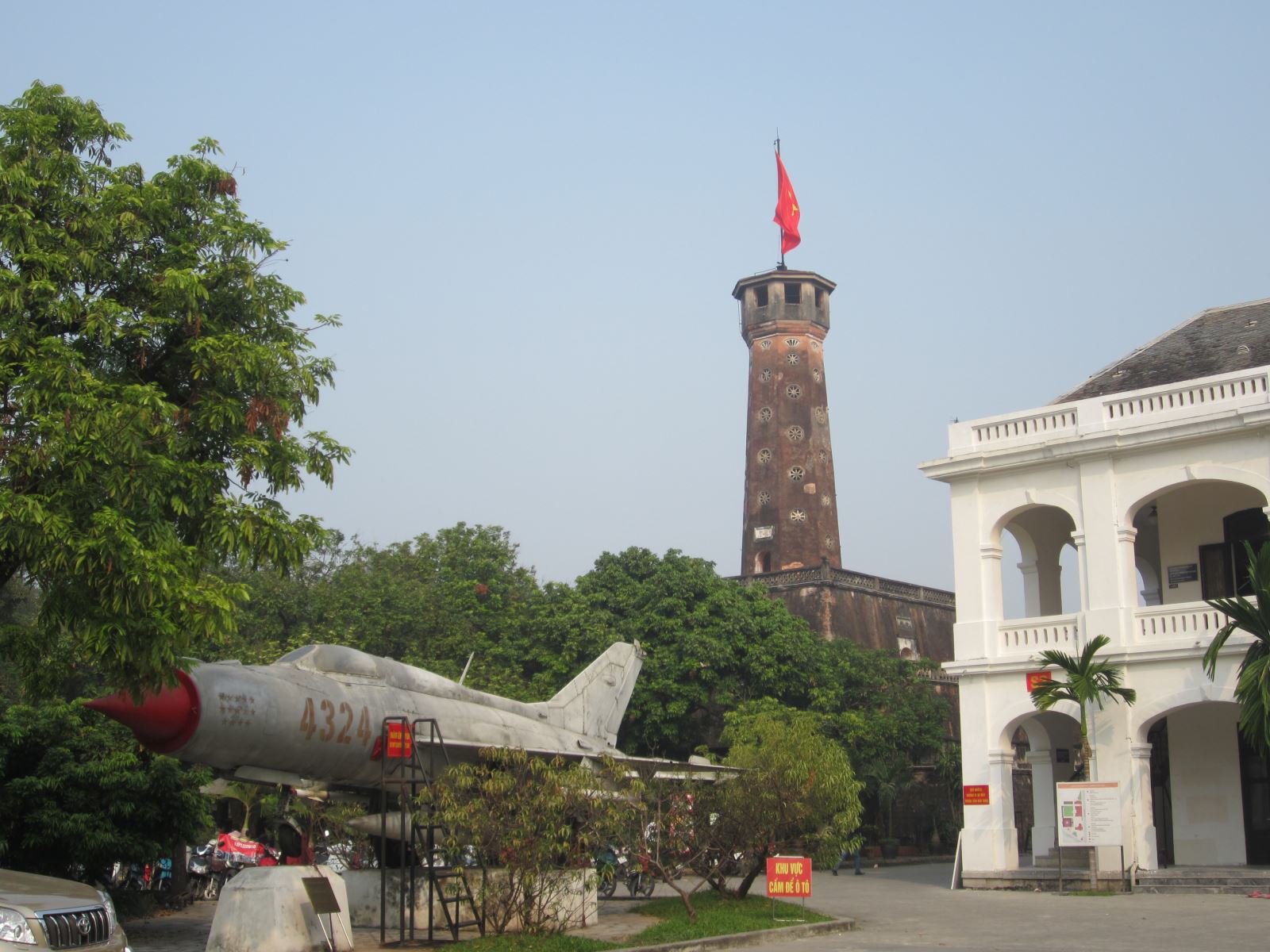
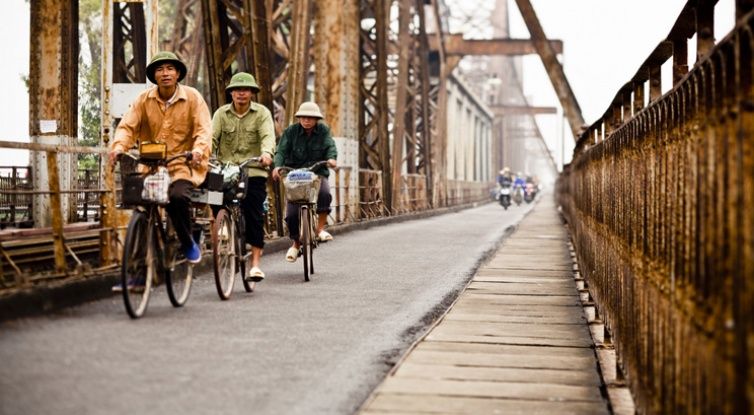
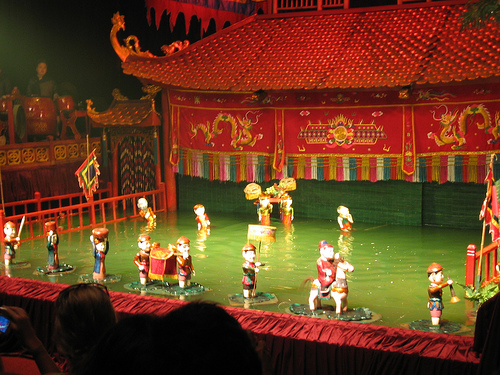
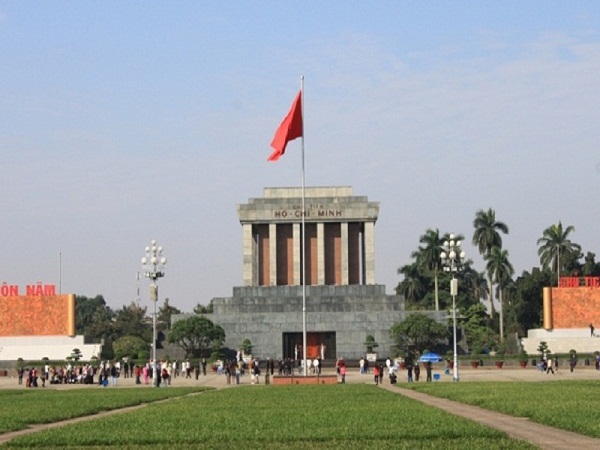
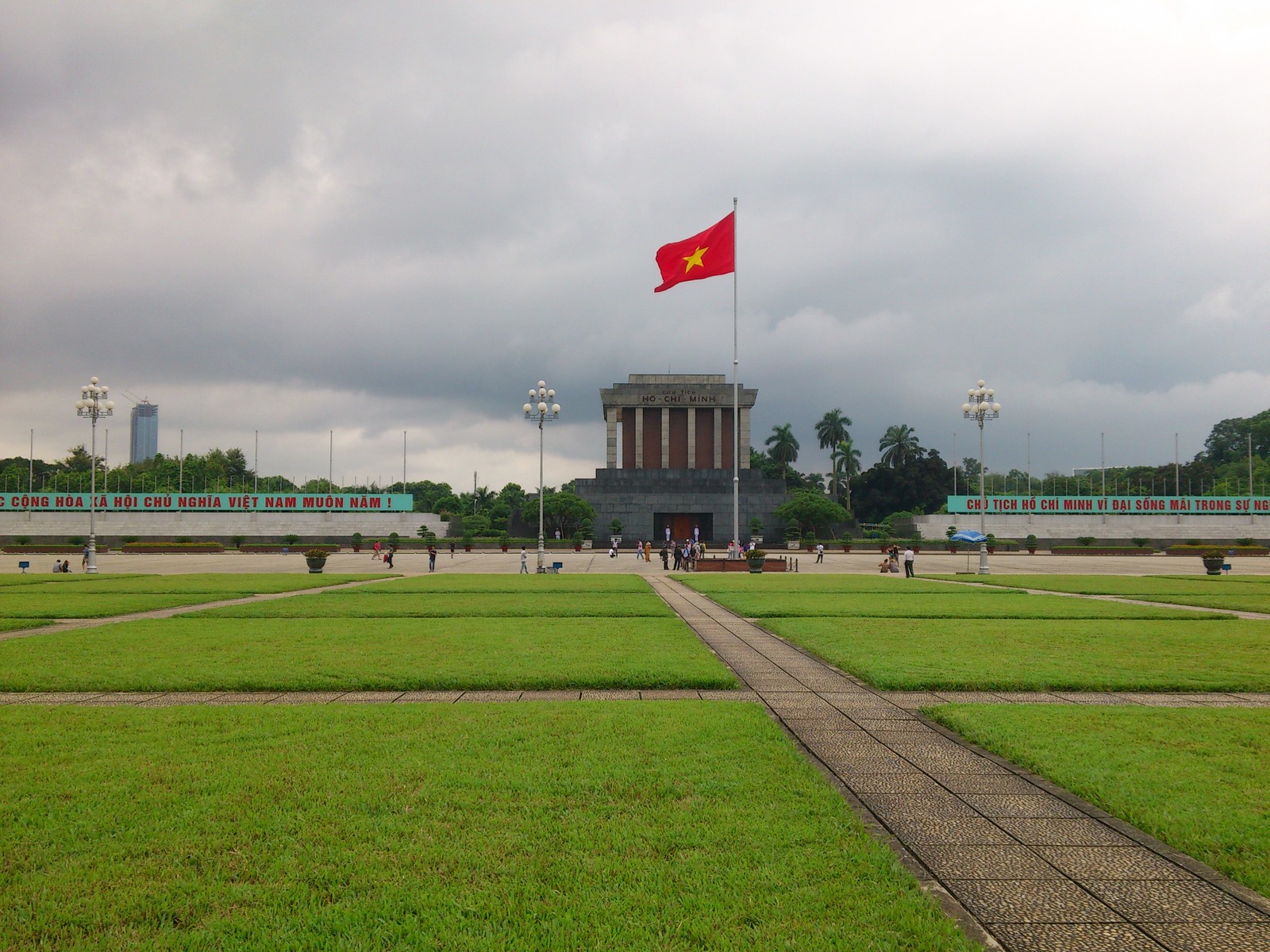
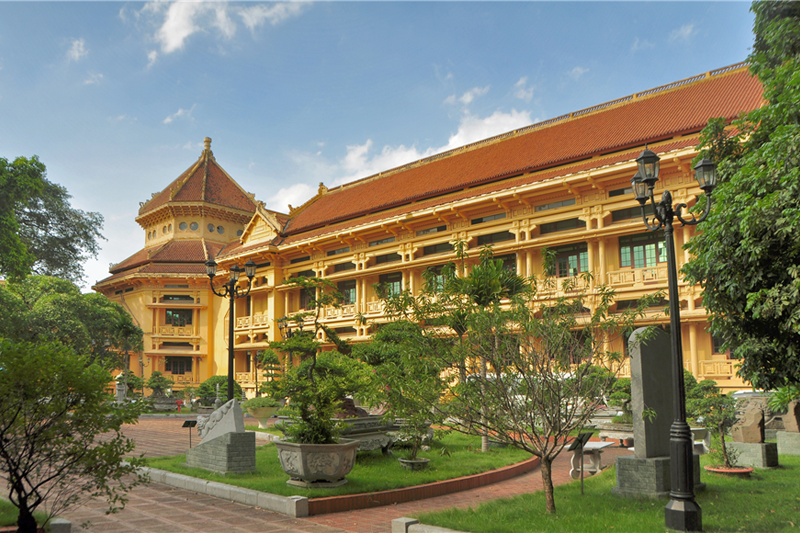
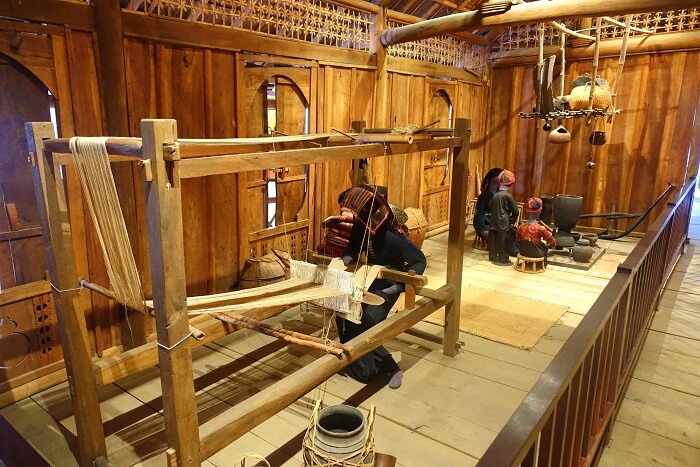
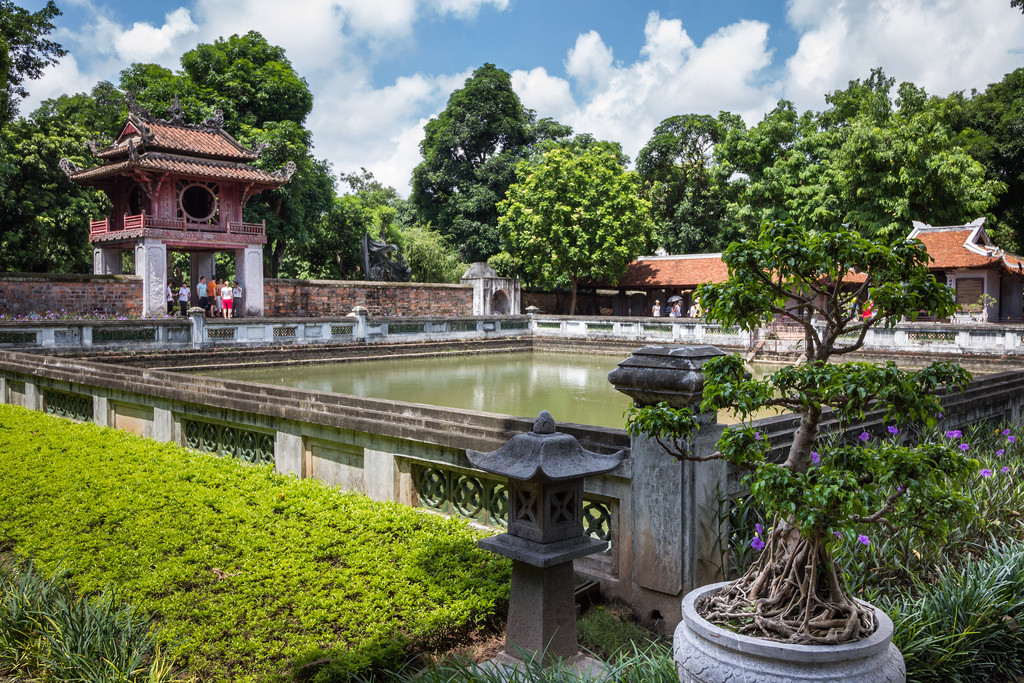
.jpg)
